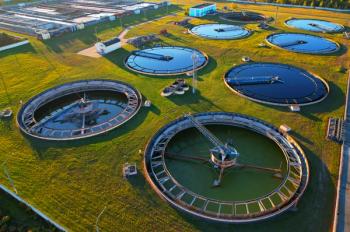
Quantifying Inorganic Carbon in Soil Using Sulfamic Acid and Gas Chromatography
Researchers at Andes Ag, Inc. (Alameda, California) established a high-throughput framework for the robust and precise quantification of soil inorganic carbon (SIC) from agricultural soils using gas chromatography (GC).
A study conducted by the carbon removal company Andes Ag, Inc. (Alameda, California) resulted in the development of a robust protocol for the sensitive and specific quantification of inorganic carbon from soils using gas chromatography (GC) to quantify carbon dioxide evolved from carbonates in soil with sulfamic acid. The researchers demonstrated the precision of this method with purified carbonates, carbonate minerals, biogenic carbonates, and agricultural soil samples, as well as the accuracy by adding known amounts of calcium carbonate to a variety of soil matrices. A paper based on their work was published in PLOS One (1).
The primary greenhouse gas produced through human activities (2–4), carbon dioxide (CO2) is a significant contributor to global climate change; to limit increases in temperature to 2 °C by 2100, both emission reduction and removal of greenhouse gases such as CO2 from the atmosphere will be necessary (5,6). Depositing inorganic carbon into crop fields may be a significant carbon sequestration strategy (7–9), positioning agricultural land as a potential key contributor to achieving net-zero CO₂ emissions and mitigating the effects of global warming (10). There is, therefore, according to the authors of the study, an urgent need for frequent and accurate quantification of soil inorganic carbon (SIC) from this setting (1).
To increase throughput, the researchers developed a method rapid enough to process hundreds of samples per day, yet also sensitive and reliable for precise and accurate readings of carbonates in the complex matrix of soil. They selected a GC instrument for this method due to its operational ease, throughput capacity, precision, and reliability (1). Previous studies have used GC to detect carbonates in aqueous samples such as environmental water or wastewater, which enabled the monitoring of these chemical species in waterways (11,12). The GC method described in their paper allowed for the separation and detection of a “room-air” peak, composed primarily of N2 and O2 that are unresolved by the column, and a CO2 peak that is eluted later. The CO2 peak from laboratory air is small but detectable above the background noise (1).
Based on the results of their study, the team views the GC instrument as a vital part of a larger laboratory automation system, enabling vastly expanded measurement of SIC. As GC instruments are widely used in academic and industrial laboratories, this makes service and maintenance on these instruments straightforward to schedule through original and third-party vendors, which contrasts with specialized carbon measurement instruments, where service technicians may not be immediately available to fix the instrument. The use of automated syringe pumps can expedite the injection of acid for carbonate dissolution, and GC autosamplers free up the end user’s time. Automated scripts for data analysis and data quality control can aid in the processing of large amounts of collected data. Together with a laboratory that is set up for higher throughput experimentation, the researchers believe that their method allows for SIC measurement not just at a greater scale but also at higher resolution by sampling more frequently in fields (1).
References
1. Yip, C.; Weyman, P. D.; Wemmer, K. A.; et al. Quantification of Soil Inorganic Carbon using Sulfamic Acid and Gas Chromatography. PLoS One 2025, 20 (5), e0320778. DOI:
2. Davis, J. Climate Change and the Scope for Global Greenhouse Gas Reductions. CABI Reviews 2016, 1–11. DOI:
3. Wang, B.; Lerdau, M.; He, Y. Widespread Production of Nonmicrobial Greenhouse Gases in Soils. Glob. Chang. Biol. 2017, 23 (11), 4472–4482. DOI:
4. Miller, G. A.; Rees, R. M.; Griffiths, B. S.; et al. Isolating the Effect of Soil Properties on Agricultural Soil Greenhouse Gas Emissions Under Controlled Conditions. Soil Use Manage. 2020, 36 (2), 285–298. DOI:
5. Irving, D. B.; Wijffels, S.; Church, J. A. Anthropogenic Aerosols, Greenhouse Gases, and the Uptake, Transport, and Storage of Excess Heat in the Climate System. Geophys. Res. Lett. 2019, 46 (9), 4894–4903. DOI:
6. IPCC. Global Warming of 1.5°C. An IPCC Special Report on the Impacts of Global Warming of 1.5°C Above Pre-Industrial Levels and Related Global Greenhouse Gas Emission Pathways, in the Context of Strengthening the Global Response to the Threat of Climate Change, Sustainable Development, and Efforts to Eradicate Poverty. Cambridge: Cambridge University Press; 2018.
7. Beerling, D. J.; Epihov, D. Z.; Kantola, I. B.; et al. Enhanced Weathering in the US Corn Belt Delivers Carbon Removal with Agronomic Benefits. Proc. Natl. Acad. Sci U S A 2024, 121 (9), e2319436121. DOI:
8. Raza, S.; Irshad, A.; Margenot, A.; et al. Inorganic Carbon is Overlooked in Global Soil Carbon Research: A Bibliometric Analysis. Geoderma 2024, 443, 116831. DOI:
9. Haque, F.; Santos, R. M.; Chiang, Y. W. Optimizing Inorganic Carbon Sequestration and Crop Yield with Wollastonite Soil Amendment in a Microplot Study. Front. Plant Sci. 2020, 11, 1012. DOI:
10. Beerling, D. J.; Kantzas, E. P.; Lomas, M. R.; et al. Potential for Large-Scale CO2 Removal via Enhanced Rock Weathering with Croplands. Nature 2020, 583 (7815), 242–248. DOI:
11. Xie, W. Q.; Gong, Y. X.; Yu, K. X. Simple and Accurate Method for Determining Dissolved Inorganic Carbon in Environmental Water by Reaction Headspace Gas Chromatography. J. Sep. Sci. 2018, 41 (5), 1091–1095. DOI:
12. Loughrin, J. H.; Antle, S. W.; Polk, J. A Gas Chromatographic Method for the Determination of Bicarbonate and Dissolved Gases. Front. Environ. Sci. 2017, 5, 65. DOI:
Newsletter
Join the global community of analytical scientists who trust LCGC for insights on the latest techniques, trends, and expert solutions in chromatography.





